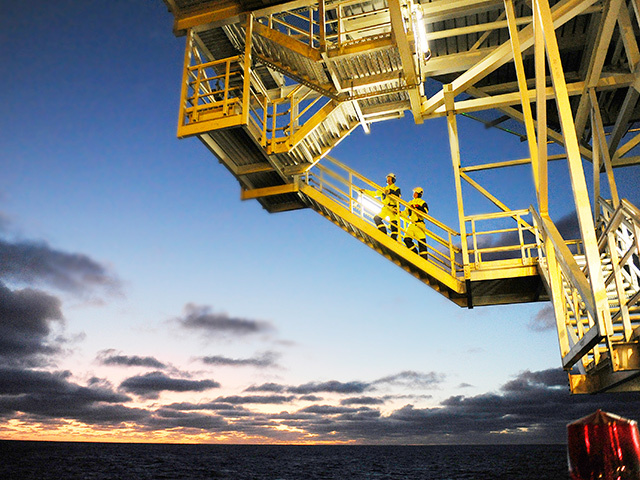
Explorers look set to drill a record number of wells in Norway’s Arctic waters this year, undeterred by oil prices apparently stuck below $60 a barrel.
After making a discovery of as much as 100 million barrels of oil in the Barents Sea, Lundin Petroleum AB said on Monday that it wants to squeeze two more exploration wells into its program this year, even if it means hiring an additional rig. That could push the total number of wells in the area to 16, two more than the record in 2014, according to forecasts from the Norwegian Petroleum Directorate, the industry regulator, and Rystad Energy AS, an Oslo-based consulting firm.
The Norwegian Barents may contain as much as half the country’s unexplored resources, according to the NPD. Yet with crude still trading at half the highs it reached in 2014, the record drilling campaign sounds counter-intuitive. Elsewhere in the Arctic companies such as Royal Dutch Shell Plc are scrapping projects, and in Norway as a whole, the NPD forecasts an 11-year low in exploration activity.
A number of factors are converging to explain the surge in Barents exploration, according to Rystad project manager Simon Sjothun and Adam Wilson, an analyst at Edinburgh-based consultant Wood Mackenzie:
Explorers are following up on recent successes by companies such as Statoil ASA, Lundin and OMV AG to add resources and build critical mass for developments. This, according to both WoodMac and Rystad, is the most important factor The government awarded licenses in completely unexplored acreage for the first time in 20 years, near the Russian maritime border, stoking hopes of huge discoveries The first oil field in the Barents Sea, Eni SpA’s Goliat, started production last year; for all its delays and problems, the platform offers the infrastructure to process future discoveries nearby Efficiency gains and lower supplier prices resulting from the market downturn have made both exploration drilling and field developments cheaper Norway has a refund system for exploration expenses which makes high-risk prospects more attractive
In addition, the remote area off the country’s northern tip enjoys the benefits of the Gulf Stream, meaning that unlike the rest of the Arctic, it’s largely ice-free.
“It’s a very exciting year for the Barents Sea,” said Sjothun.
Giant Find
The prospect industry observers will be watching most closely this year is Statoil’s Korpfjell well near the Russian border. Rystad estimates that Korpfjell could contain as much as 10 billion barrels of oil and gas. Statoil, which will drill its first exploration wells in the Barents since a disappointing campaign in 2014, has sought to downplay the estimates. Lundin, a partner in the project, has said it can hold “several billion barrels.”
“Korpfjell in itself could be a game changer, for Norway and for the southern Barents Sea,” Lundin’s Chief Executive Officer Alex Schneiter said during the company’s capital markets day on Monday.
The cost of developing fields in the Barents Sea has been inflated by the lack of infrastructure in the remote area. Statoil has delayed its Johan Castberg project several times, but now says it´s reduced the price it needs to break even to $35 a barrel from $80 just a few years ago. It plans a final investment decision on the project at the end of the year.
That’s encouraging news for the entire industry at a time new discoveries are needed to fill a production void from the middle of the next decade, said Petroleum and Energy Minister Terje Soviknes.
“We see a mix of players on the Norwegian shelf that are very aggressive,” he said in a phone interview on Tuesday. “They see that the Barents Sea can be profitable for future discoveries.”
Recommended for you
